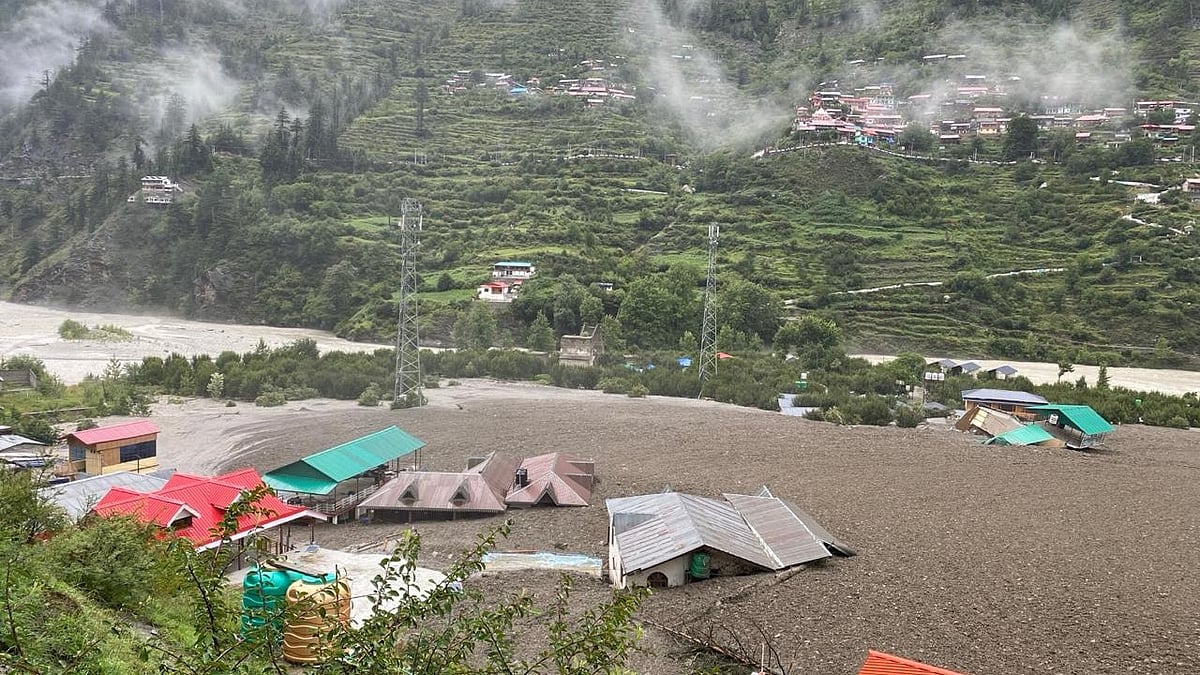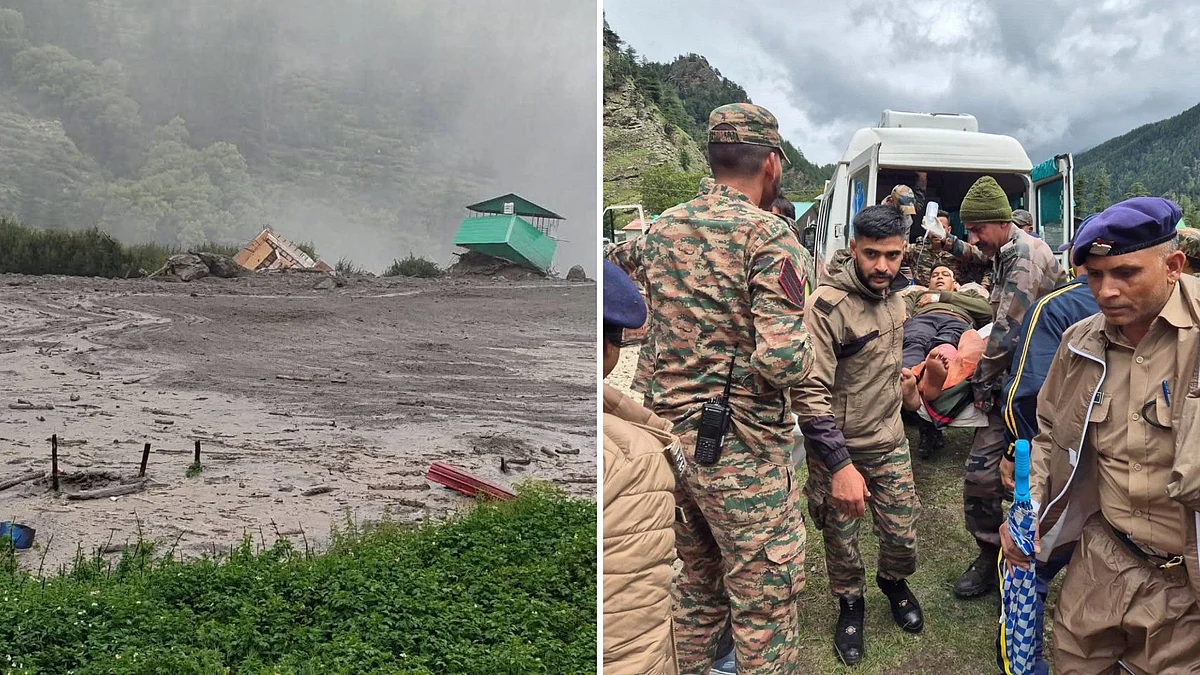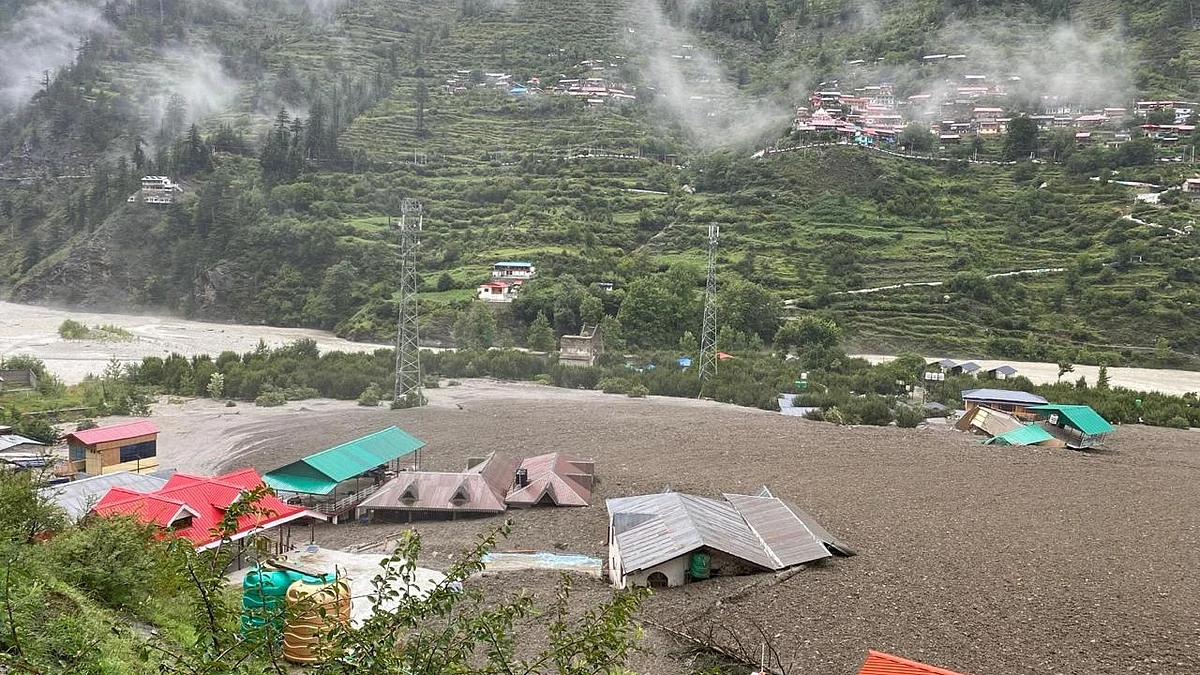A wall of water from an apparent cloudburst has brought calamity to a picturesque mountain in Uttarakhand’s Dharali town, taking the lives of many people and destroying a large swathe of hotels and houses. Fortuitously recorded mobile phone videos show the swelling waters descending on habitations after torrential rain swelled the Kheer Ganga River, catching people by surprise, knocking down buildings like papier mâché structures and burying everything in sight under many feet of sediment.
The initial single-digit death toll appears small, and, in spite of valiant rescue efforts by the Army and disaster response forces, there are justified fears for the large number of missing people, including many tourists. Residents of the state, along with their neighbours in Himachal Pradesh, Jammu, Kashmir, Ladakh and parts of Nepal, are weary of the repetitive cycle of weather events bringing death and destruction. There have been hundreds of extremely heavy rainfall episodes spread across small and big areas in the region, but the steep, mountainous terrain contributes to severe destruction because the windward side captures the rain almost exclusively, leaving the leeward side drier.
In recent memory, the worst extremely heavy rainfall and flooding event was the death of over 6,000 people in 2013 in Uttarakhand, with the famous Kedarnath temple at the centre of the disaster; hundreds of downstream villages also faced the brunt. Across the Himalayas, these communities are now looking for credible answers to the annual cycle of deluge and destruction.
It is becoming clearer with each flood episode that the activities carried out by governments of the Himalayan states to facilitate more tourism—on which Uttarakhand and Himachal Pradesh depend heavily—are not within the realm of sustainability. The increase in the frequency of severe cloudburst events in the region over time, believed to be linked to a hotter climate, and its vulnerability to earthquakes make tourism expansion incongruous.
Some researchers believe that the fragility of the mountains is being overlooked. A number of touristic areas offer a shaky foundation because they have more recent rock formations, and this should lead to a cap on the number of dwellings, including hotels, and no heavy construction should be allowed. Equally important, vehicular access should be severely restricted. It is pertinent to ask whether Uttarakhand has acted diligently on its resolve to study the carrying capacity of all towns in the state and propose remedial measures for risky tourism sites.
A Supreme Court-appointed panel on the Char Dham yatra recommended a ceiling of 5,000 pilgrims a day at Kedarnath a few years ago, for instance, but the actual visitors to this temple were three times that number post-COVID. Governments may place greater reliance on better weather prediction capabilities, but they may no longer be able to avoid biting the bullet during the monsoon season, when westerly winds and accumulating precipitation are aggravated by local mountainous factors to brew deadly floods.










